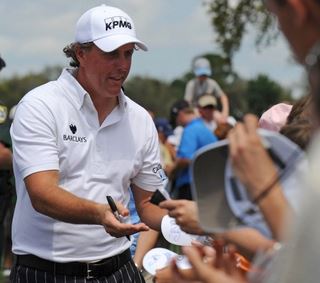Podcast: Play in new window | Download
Subscribe: RSS
Take a bow, Phil Mickelson! Lefty earned his degree in psychology at Arizona State, but one of golf’s most successful stars paid keen attention during his business classes, too.
Phil has taken a lot of heat over the past year for brutally honest comments related to the PGA Tour and the huge pot of golf gold which he believed that the golf monopoly had been sitting on.
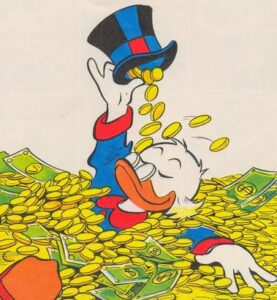
Mickelson railed about the PGA Tour’s reluctance to pay more of that money back to the players whose talents are being profitably marketed by the long-time professional golf tour.
As stated by yours truly before (here and here), professional golfers are not employees of the PGA Tour. They work as independent contractors who are expected to pay for their own expenses. In return, the PGA Tour allows qualified golfers a chance to earn millions by playing in up to 46 sponsored events every year. As part of the agreement, the pro golfers must abide by the rules of the PGA Tour, too.
The 52-year old Phil Mickelson became a one-man wrecking crew several months ago with some explosive comments about the greed of the PGA Tour. Mickelson has done quite well. He has earned nearly $100 million over his 30-year career and is #9 in career PGA Tour victories (44).
When Phil talks, the media listens.

“If the tour wanted to end the Saudi threat or from anywhere else they would just hand the rights back to the players”, said Mickelson. “But they would rather throw $25 million here or $40 million there than give back the roughly $20 billion in digital assets they control”.
For example, Lefty said that the PGA Tour will grant you the rights to use video of his famous second shot from the pine straw at Augusta National’s #13 hole for a mere $30,000 – per second!
“‘That type of greed is, to me, beyond obnoxious”.
A few months after sparking this war with the PGA Tour, Phil Mickelson became the biggest name to sign with the new LIV Golf group this spring. Reports indicated that Mickelson received a $200 million signing bonus to come aboard.
Once Phil bolted for the new LIV Golf group, he became a villain in the eyes of many of his former fans. Is Phil Mickelson just another greedy professional athlete?
The PGA Tour responded by saying that Phil Mickelson (and any former PGA golfers) who accepts money from LIV Golf will be suspended indefinitely from participating in PGA events.
Phil Mickelson, the second most popular player in professional golf behind Tiger Woods, is among several pro golfers who have been told by the PGA Tour to “Hit the Road, Jack!”
The professional golf war has escalated ever since.
More and more PGA players have jumped ship this spring and summer to snag multi-million dollar signing bonuses from the LIV Golf tour. You are likely to hear a few more big names jumping ship as early as next week after the PGA Tour’s season-ending Tour Championship concludes on Sunday.
With the PGA Tour hemorrhaging name brand young talent like Dustin Johnson, Bryson DeChambeau, Brooks Koepka, Patrick Reed, and others, the golf tour has been forced to (reluctantly) respond in kind by opening up its wallet.

Earlier this week, the PGA Tour announced a significant number of changes which will be coming to the traditional men’s golf group in 2023. Among the changes are:
- The top players on the PGA Tour will commit to playing in 20 events per season. In the past, players were required to play in just 16 tournaments every year barring injury.
- Of these 20 events, the top players must participate in nine “elevated events” featuring purses of $20 million or more (today’s average tour event features around $8 million in prize money), the FedEx Cup (three events), the four traditional golf majors, the Players Championship, and three other events of the player’s choosing.
- A “top player” is defined as one who finishes in the Top 20 under the current Player Impact Program (i.e. – a popularity contest) under both the current definition and a revised program (a formula based on internet searches, fan feedback, media mentions, and broadcast exposure).
- The funding for the Player Impact Program will be increased to $100 million annually (currently $50 million) and split among the top 20 players as defined above.
- A new “Players Assurance Program”. If a player is fully exempt on either the Korn Ferry or PGA Tour and plays in at least 15 events that season, the golfer will be guaranteed at least $500,000 annually. The PGA Tour will ante-up the money as a type of “draw” account at the beginning of a new golf season. The player will be allowed to keep the money if he fails to earn at least $500,000 by the end of that season.
- A new “Travel Stipend Program”. This only applies to the golfers not finishing in the Top 125 earnings at the end of a season. Those players will be paid $5,000 for every missed cut in order to help subsidize their travel and tournament expenses.
It didn’t take long for some of the former PGA players who have migrated to the new LIV Tour to offer some thoughts about the PGA Tour’s new game plan.

Former longtime PGA golfer Lee Westwood said, “They (the PGA Tour) have always been bullies and now they are getting their comeuppance. Now, funnily enough, they are proposing 20 events that look a lot like LIV. Hopefully, at some point they will all choke on their words. And hopefully, they will be held to account as we were in the early days.”
So, where did the PGA Tour come up with the money to pay for all of these changes? Let’s ask PGA Tour Commissioner Jay Monahan:
“This year… the tour is having its strongest year in history of the PGA Tour and is performing well ahead of budget. Secondly, the tour through the years has been very prudent in managing its finances and building reserves and being in a position to be able to invest in programs that are going to help the tour grow. That’s what they’re there for, and that’s what we’ll continue to use them for.”

Just how well has the PGA Tour been doing financially the past several years? Time to hit the books!
The PGA Tour is organized as a tax exempt 501 (c )(6) in the eyes of the IRS. According to public data (IRS Form 990), the PGA Tour generates more than a billion dollars in revenue annually and has turned a nifty profit for each of the five years I reviewed (2016-2020).
Looking at the PGA Tour’s revenue streams, nearly 80% is generated by media rights (TV money), golf tournaments managed, sponsorship revenue, and production revenue. Another large pot (15%) of money comes from royalties earned from the sale of PGA Tour merchandise.
Below is a summary which I put together showing a summary of income and expenses for the 5-year period 2016-2020 (the most recent public data):
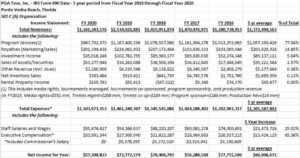
A not-so-insignificant 5% of total revenue is derived from “Investment Income”. The PGA Tour pocketed an average of nearly $70 million per year from interest earned on a growing pile of cash which has remained inside of the PGA Tour’s investment accounts for years.
From the expense side of the ledger, about half of the PGA Tour’s biggest annual expense is related to the prize money paid to the players at its golf tournaments. The PGA Tour also chips-in another $60-70 million annually into the golfers’ retirement fund.
The PGA Tour claims to be quite generous. In 2019, the Tour gave money to 336 different charities for a total of over $47 million. However, with $1.46 billion of expenses for the year, the donations equate to just 3.2% of the Tour’s annual cost of doing business.
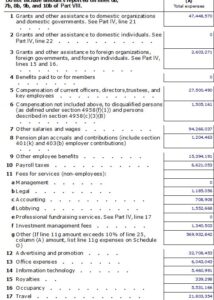
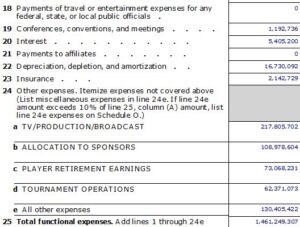
PGA Commissioner Jay Monahan earned an average of about $4 million per year during the 5-year period reviewed. Surprisingly, I learned that the 2019 executive compensation included paid salaries for three current PGA “Player Directors”. In 2019, professional golfers Kevin Streelman, Jordan Spieth, and Charlie Hoffman each earned between $1.4 and $2 million for their role as part of the executive team. The PGA players appear to rotate through these positions over the years.
In sum, the PGA Tour’s annual revenues exceeded expenses by an average of $67 million per year during the five years which I reviewed. A total of $334 million in surplus cash was available from 2016-2020 which could have been shared with the golfers.
During the same period, the PGA Tour’s assets (value of items owned) grew 52% from $2.6 billion to $3.9 billion. Liabilities (amounts owed) grew from $1.5 billion to $2.7 billion. Below is a look at 2019’s balance sheet:
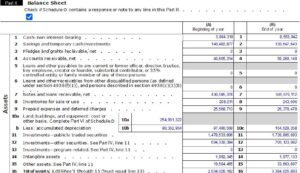
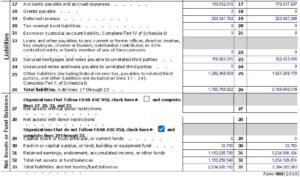
By any measure, the PGA Tour has been quite profitable and keeps on growing.
The league’s most valuable assets (the golfers) had a legitimate right to ask, “Where’s the beef?”

Despite his un-Phil Mickelson manner of saying it, the six-time major winner was correct in claiming that the PGA Tour had been less than forthcoming in sharing its growing profits with the players. Since the PGA Tour has functioned like a golf monopoly for decades, perhaps the executive management team had grown arrogant. The success of the tour has always been about the popularity of the golfers and their incredible talents.
Adjustments were long overdue for PGA Tour golfers. Beginning in 2023, the remaining golfers on the PGA Tour will enter a new era filled additional prize money and greater financial security.
Yes, Phil was right all along!
Now, would somebody please ask him to shave and stop wearing those ugly black outfits on the golf course?!!


